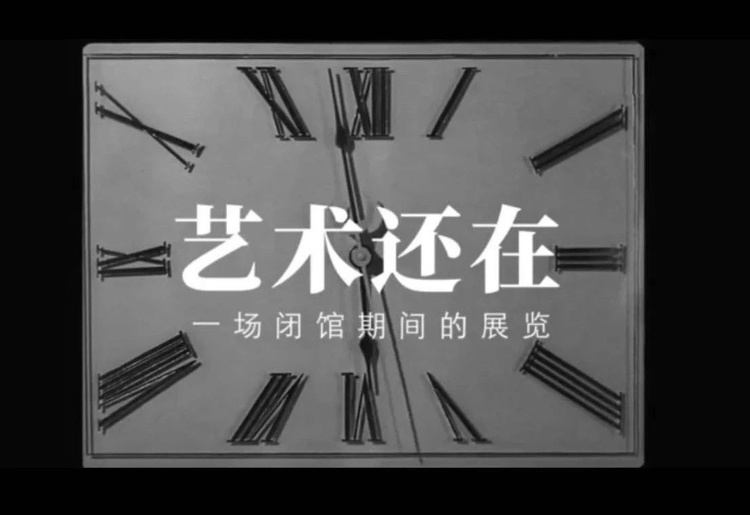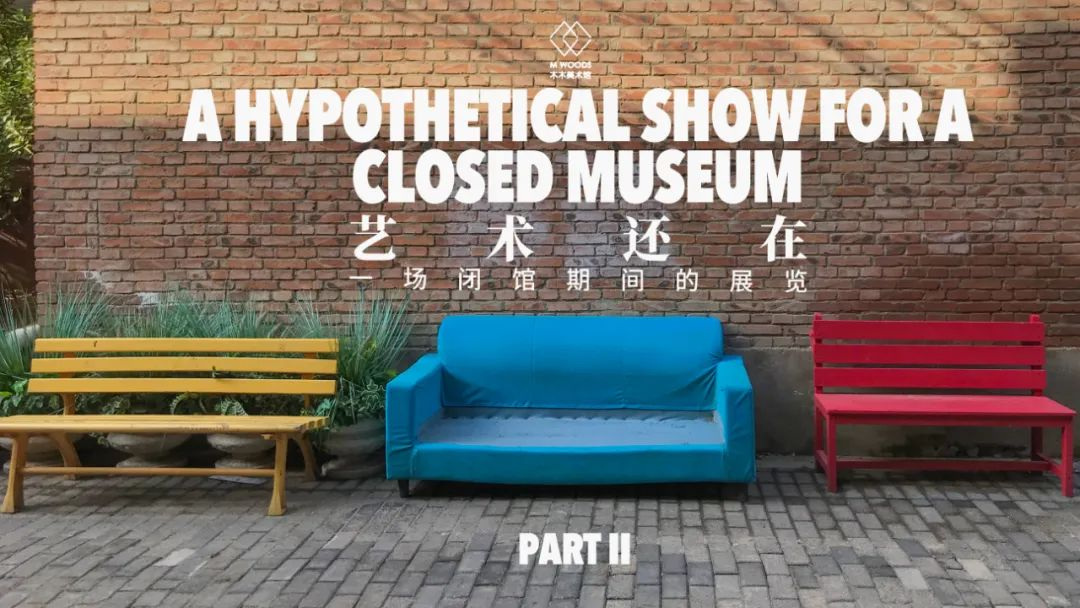Art Is Still Here: A Hypothetical Show for a Closed Museum
2020 FEB 13 – ONGOING
ROOM【0409KZ】

M WOODS Online Schedule (CST Beijing Time):
Weibo: Everyday @ 12.00 pm
WeChat: Every Thursday @ 6.00 pm
Instagram: Every Thursday and Friday @ 10.00 pm
Art Is Still Here: A Hypothetical Show for a Closed Museum
2020 FEB 13 – ONGOING
ROOM【0409KZ】
Art Is Still Here: A Hypothetical Show for a Closed Museum
2020 FEB 13 – ONGOING
ROOM【0409KZ】

M WOODS Online Schedule (CST Beijing Time):
Weibo: Everyday @ 12.00 pm
WeChat: Every Thursday @ 6.00 pm
Instagram: Every Thursday and Friday @ 10.00 pm
Weibo: Everyday @ 12.00 pm
WeChat: Every Thursday @ 6.00 pm
Instagram: Every Thursday and Friday @ 10.00 pm

Rodrigo Braga, Tônus (Tone), 2012, HD 16:9 Single channel edition, 10 min
Courtesy the artist
Biography:
Rodrigo Braga was born 1976 in Manaus (Amazon, Brazil), soon he moved to Recife (Northeast Brazil), where he received a degree in Visual Arts at the Federal University of Pernambuco (UFPE, 2002). Currently living between Rio de Janeiro and Paris.
Working with performative actions or manual constructions directly on natural landscapes or even finding his interest concerning to the nature in urban spaces, his body intervenes on his surroundings or sometimes is also part of the images. Existential and conflictive relations between man in his environment are matter of his production. He is interested in material elements and their broad symbolic meanings, touching on some social and ethical terms that involve humanity and its controversial ways of creating systems of extraction, modification and induction of nature, which sometimes tends to the anthropocene collapse itself.
Braga has held solo exhibitions at Galeria do BNDES in Rio de Janeiro, Paço das Artes in São Paulo, Museu de Arte do Sâo Paulo, Museu de Arte Moderna Aloisio Magalhães in Recife, among many other Brazilian galleries and institutions. He is the recipient of numerous prizes such as Prêmio MASP Mercedes-Benz de Artes Visuais, Prêmio PIPA 2012, Prêmio Marc Ferrez de Fotografia FUNARTE/MinC, and Prêmio Video-arte Fundação Joaquim Nabuco, among others.
Work Synopsis:
Braga addresses the conflict between man and nature, human and animal. In Tônus (2012), he ties himself to a goat and attempts to run in a different direction, an action that results in them both spinning endlessly in circles. He also fights the claws of a crab with his bare hand, a duel that ends in stalemate – a metaphor for the human condition in a landscape impossible to tame.

Zhang Enli, Untitled, 2020, Photograph, 50cm x 60cm
Courtesy the artist; ShanghART, Shanghai
Biography:
Zhang Enli, born 1965 in Jilin Province, China is a professional artist living and working in Shanghai. He graduated from the Arts & Design Institute of Wuxi Technical University, China in 1989, and teaches at the Arts and Design Institute of Donghua University.
His paintings depict the familiar and overlooked, everyday objects connected through the artist's immediate surroundings, often from unusual viewpoints or focusing on seemingly insignificant details. He produces works that invite universal interpretation. He often works in series, such as his paintings that focus on the idea of the container—cardboard boxes, ashtrays, tin chests and lavatories. Other works depict functional municipal structures that populate the streets of Shanghai, such as public toilets and tiled outdoor water features.
Many important institutions around the world have held his solo exhibitions, including Galleria Borghese in Italy (upcoming), Royal Academy of Arts in London, Hauser & Wirth in New York, MOCA in Taipei, ShanghART Gallery in Shanghai, Art Basel Unlimited in Switzerland, K11 Art Foundation in Hong Kong, Museo d'Arte contemporanea di Villa Croce in Italy, Institute of Contemporary Arts in London, Shanghai Art Museum, Minsheng Art Museum in Shanghai, Kunstmuseum Bern in Switzerland and Ikon Gallery in Birmingham etc; Zhang's group exhibitions have been presented by Fondazione Prada in Milan, The 1st Antarctic Biennale, Centre Pompidou in Paris, PAC-Milan Museum of Contemporary Art in Italy, Villa Reale's Galleria d'Arte Moderna in Italy, Lehmbruck Museum in Germany, Yokohama Museum of Art in Japan, Vancouver Art Gallery in Canada, Contemporary Art Museum of the Rubell Family Collection in U.S.A., Birmingham Museum and Art Gallery in the U.K., Kochi-Muziris Biennale in India, The 6th Curitiba Biennial in Brazil, Gwangju Biennale in Korea, The 7th Shanghai Biennale, Yokohama Triennale and Villa Manin-Centre for Contemporary Art Passariano in Italy etc.

Zhao Zhao, In Extremis, 2018, Film, 60 min
Courtesy the artist
Biography:
Zhao Zhao was born in Xinjiang, China, in 1982. He graduated with a BFA from the Xinjiang Institute of Arts from the department of Oil Painting in 2003. The former assistant to Ai Weiwei and now regarded a significant figure among the young Post-80s generation of contemporary Chinese artists, Zhao Zhao’s work is often renowned for confronting existing ideological structures and exercising the power of individual free will in his work. His provocative, multidisciplinary artist practice has garnered him international attention in recent years as an ‘artist to watch’. Zhao Zhao’s multidisciplinary body of work is an inspection of China’s contemporary profile, and the socio-political consequences of individual human action.
Zhao Zhao has exhibited in group museum shows worldwide including JingShen: The Act of Painting in Contemporary China, Padiglione d’arte Contemporanea, Milan, Italy (2016); Zero Tolerance, MoMA PS1, New York, NY (2014); Time is a Saw: Established and Emerging Contemporary Chinese Artists, Crossman Gallery, University of Wisconsin-Whitewater, Whitewater, WI (2014); Humboldt Lab Dahlem, Museum of Art Art, Berlin, Germany (2013); Game of Thrones, Museum für Asiatische Kunst, Berlin, Germany (2013); Individual Growth – Motive Power of Contemporary Art, Tianjin Art Museum, Tianjin, China (2013) etc.
Work Synopsis:
Directed and shot by Zhao Zhao, the 60-minute film In Extremis shares the exhibition’s origin story and a special interview section, as well as showing how the works were produced and installed; these different elements are interwoven in the film. In Extremis is a faithful representation of the exhibition, but because it is structured by different perspectives and narratives, it leaves the viewer with the possibility of extending that vision.
Over two weeks, Zhao Zhao interviewed more than one hundred different visitors to the exhibition. They were curators, artists, scholars, music producers, writers, students, and retired cadres, and they described their understanding of “in extremis” (a Latin phrase meaning “in extreme circumstances,” or “at the point of death”) and their thoughts on society based on their own experiences. These different viewpoints brought this idea into the wider world and into contact with the speaker’s life experiences. These interviews vividly reflect the various conflicts and difficulties that arise between individual consciousness and collective society, the anxiety that seems universal today, or the sense of isolation that belongs to just one person.
To paraphrase Tolstoy, “All happy people are alike; each unhappy person is unhappy in his or her own way.” Documentary footage and interviews around the phrase “in extremis” extend the story outward from the experiences of one cat to a reality in which this story is ubiquitous. People’s ideals hesitation, resolution, or loss is revealed in their words, gestures, or gaze, giving the phrase “in extremis” a completely new context and circumstances. In this sense, In Extremis is another experiment with an exhibition format, but it is also a universal extension of the words “in extremis.” On a small scale, every state of “in extremis” presents the viewer with an artistic vision, as well as a sense of the inescapable unhappiness of our times.

Jonathas de Andrade, O peixe (The Fish), 2016, 16 mm film transferred to HD video, sound, color; 37 min
Courtesy the artist; Alexander and Bonin, New York, and Galeria Vermelho, São Paulo
Biography:
Jonathas de Andrade was born in 1982 in Maceió, Brazil and lives and works in Recife. The artist uses photography, installation and video to traverse collective memory and history, making use of strategies that shuffle fiction and reality. De Andrade collects and catalogues architecture, images, texts, life stories and recomposes a personal narrative of the past.
Past solo museum exhibitions include Instituto Cultural Itaú, São Paulo (2008); Instituto Cultural Banco Real, Recife (2009); Centro Cultural São Paulo (2010); Museu de Arte Contemporânea de São Paulo (2010); Kunsthalle Lissabon, Lisbon (2013); Musée d’art Contemporain de Montréal (2013); Museu de Arte do Rio (2014-2015); Museu de Arte de São Paulo (2016-17); The Power Plant, Toronto (2017); New Museum, New York (2017). In 2019, a solo exhibition of Jonathas de Andrade’s work opened at the Museum of Contemporary Art, Chicago.
De Andrade has participated at the Mercosul Biennial, Porto Alegre (2009); New Museum Triennial, New York (2011); 29th São Paulo Biennial (2011); Istanbul Biennial (2011); Lyon Biennial (2013); Performa15, New York (2015); 32nd São Paulo Biennial (2016); and in SITE Santa Fe (2016). Jonathas de Andrade’s work was also included in Under the Same Sun: Art from Latin America Today at the Guggenheim Museum, New York (2014), Question the Wall Itself at the Walker Art Center (2016-17), and Unfinished Conversations: New Work from the Collection at The Museum of Modern Art, New York (2017). In 2019, the artist’s work will be included in MOMENTA Biennale de l’image, Montréal and the Istanbul Biennial.
Work Synopsis:
O Peixe 2016 installation: one HD video projector, one HD media player, 5.1 Sound. Duration: 37:06 minutes. High-definition video (color). Projected to a minimum size of 225 x 400 cm in a self- enclosed space.
Jonathas de Andrade, whose work borders between documentary and fiction, filmed O Peixe in 16 mm in October 2015. "It's about a fishing village whose ritual is to embrace the fish after it’s caught, as a sign of respect, monitoring for the passage to death," says the artist.
The story of O Peixe, however, was created by the artist. Moreover, in order to explore the boundary between the real and the invented, the de Andrade invited ten real fishermen of São Francisco River Valley to act out the created story. The 37-minute film is looped, and repeats the same narrative staged by different people, playing with the perceived veracity of the story.
"O Peixe was the first time I worked with a film crew, which made me rethink the role of production and allowed me to concentrate on the direction and photography, things I enjoyed doing,” says the artist.
Presented for the first time at the 32nd São Paulo Bienal in 2016, O Peixe was described as the Bienal’s ‘standout work.’ According to Jason Farago, ‘When Predator and Prey Are One: A Brazilian Artist’s Fish Tale,’ The New York Times (26 January, 2017)
To Be Continued...
With Contributions By:
aaajiao
Allora & Calzadilla
Annika Eriksson
Babi Badalov
Basim Magdy
Cerith Wyn Evans
Cheng Ran
Chulayarnnon Siriphol
Colectivo Los Ingrávidos
Daniel Steegmann Mangrané
Éléonore Saintagnan & Grégoire Motte
Fan Xi
Fang Di
Guido van der Werve
Haroon Mirza
Hu Xiaoyuan
Huang Rui
Jonathas de Andrade
Katja Novitskova
Laure Prouvost
Lawrence Abu Hamdan
Lawrence Lek
Li Binyuan
Lin Tianmiao
Li Tingwei
Liu Shiyuan & Kristian Mondrup
Lu Pingyuan
Lu Yang
Miao Ying
Michael Najjar
Nabuqi
Oscar Murillo
Patty Chang
Raqs Media Collective
Reynier Leyva Novo
Richard Tuttle
Robert Zhao Renhui
Rodrigo Braga
Ryuichi Sakamoto
Solange Pessoa
Stephanie Comilang
Sun Xun
Tania Bruguera
Timur Si-Qin
Victoria Sin
Visionist
Xiang Jing
Xie Nanxing
Yang Zhenzhong
Yu Ji
Zadie Xa
Zhang Enli
Zhang Peili
Zhao Zhao
